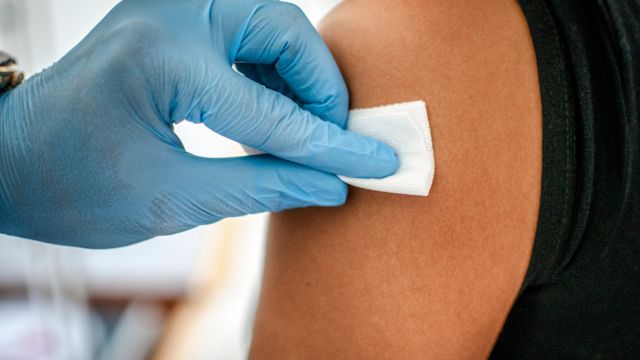Updated on September 23, 2024
Chronic inflammatory demyelinating polyneuropathy (CIDP) is a disease that causes damage to the nervous system, disrupting how the nervous system communicates with different parts of the body. This can affect strength, balance, fine motor skills, and other problems with movement and function.
While the exact causes are not fully understood, it is known that CIDP involves the immune system. Research supports the idea that CIDP is an autoimmune disease, a disorder where the immune system attacks and damages healthy cells, tissues, and organs. The main treatments for CIDP are therapies that suppress or modulate how the immune system functions.
The main treatments for CIDP
The main treatments for CIDP are immunoglobulin therapy, plasma exchange, and corticosteroids. A number of other immunosuppressant medications can also be used if needed.
Among these therapies, the most commonly used is immunoglobulin therapy—it works more rapidly than corticosteroids, and it is easier to administer compared to plasma exchange. However, it’s important to remember that there is no best treatment for CIDP, only the treatment that works best for you.
Treatment for CIDP typically continues until symptoms have resolved or stabilized, or CIDP has gone into remission.
Immunoglobulin therapy
Immunoglobulins are an essential part of the immune system. They are also known as antibodies. When an invasive substance like a virus or disease-causing bacteria enters the body, immunoglobulins attach to the invader and direct the immune system to attack it.
An immunoglobulin infusion is a solution that contains a high concentration of immunoglobulins. This solution is manufactured from blood and plasma donations. Receiving an infusion can help regulate immune system activity. In addition to CIDP, immunoglobulin therapy is used to treat a wide variety of immune system disorders.
IVIG and SCIG
Immunoglobulin therapy can be administered in two different ways:
- Intravenous immunoglobulin (IVIG), where the immunoglobulin solution is given as an infusion with a needle inserted into a vein. This is the method for the initial treatment of CIDP (induction therapy), which requires a high dosage of immunoglobulin. IVIG may also be used for maintenance therapy, follow-up doses of immunoglobulin that are given every few weeks or every few months to keep CIDP under control.
- Subcutaneous immunoglobulin (SCIG), where the infusion is given with a needle that is inserted under the skin. This approach is not used for induction therapy, but it can be used for maintenance therapy.
In other words, a person receiving immunoglobulin therapy for CIDP will begin therapy with IVIG. Following induction therapy, a person may continue with intravenous infusions for maintenance therapy, or switch to subcutaneous infusions for maintenance therapy.
Should you switch to SCIG?
For someone who needs long-term maintenance therapy for CIDP, subcutaneous injections can be a more convenient treatment option. After training from a healthcare provider, SCIG can be self-administered at home (or administered by a caregiver), while IVIG requires a trip to a healthcare provider’s office for each dose. Studies have also found SCIG to be cost-effective.
Because SCIG offers greater independence, it also requires greater responsibility. People living with CIDP and caregivers must feel confident in adhering to the dosing schedule and feel comfortable with administering infusions at home.
SCIG also requires careful monitoring, especially in the initial phase of maintenance therapy. Immunoglobulin therapy is highly individualized, and a healthcare provider will monitor and adjust treatment to determine the dosage needed.
As with any treatment, switching from IVIG to SCIG will not be right for everyone. Research supports that SCIG can be a good option for many people—and at the very least, it’s an option worth discussing with a healthcare provider.



